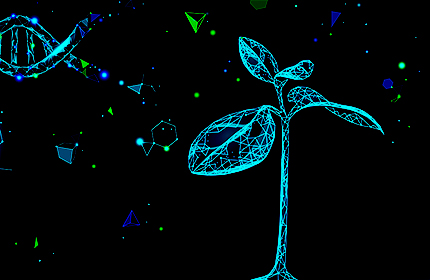Joint GEOSHARE Workshop and Improved Modeling Summit
-

September 11, 2014-September 12, 2014
8:00 am - 5:00 pmPurdue University
West Lafayette, IN, USA
This workshop was a project of the Agriculture & Food Systems Institute, Center for Integrated Modeling of Sustainable Agriculture and Nutrition (CIMSANS), as part of its efforts to launch new public-private partnerships that improve integrated modeling approaches for characterizing food and nutrition security. Partnering with CIMSANS was the Agricultural Model Inter-comparison and Improvement Program (AgMIP), which has its overarching goals to improve substantially the characterization of world food security due to climate change and to enhance adaptation capacity in both developing and developed countries. Workshop participants included about 80 leading scientists with diverse areas of expertise: crop modeling, economic modeling, human nutrition, plant breeding, information technology, etc.
The purpose of the workshop was to identify next steps for improving the modeling used to characterize the role of food systems in sustainable nutrition security (SNS), an improved assessment methodology being developed by CIMSANS that incorporates sustainability and nutrition metrics. The workshop was structured around ten breakout sessions, each of which resulted in a specific set of objectives and tasks that the assembled experts believed should be funded and performed.
Agenda
Introduction and Workshop Goals
Jerry Nelson, UIUC
Plenary Comment – Sustainable Nutrition at Nestlé
Karen Cooper, Nestlé
Breakout 1 – Economic Models
Developing the Equivalent of the GTAP Database for Agricultural Data
Sherman Robinson, IFPRI
Elasticity Estimates for the 21st Century
David Laborde, CGIAR
Breakout 2 – Economic Models
What New Features and Who Will Develop? Are There Advantages to Collective Action?
Jerry Nelson, UIUC
Variability
Hermann Lotze Campen, PIK
Nutrition
Jacques Delincé, European Commission
What Changes in Existing Models Will Be Required?
Dominique van der Mensbrugghe, Purdue University
Breakout 3 – Crop Models
The AgMIP Gold Standard for Data
Gerrit Hoogenboom, Washington State University
Opportunities for Improved Data Collection at CGIAR Centers and Other International Research Centers
B.M. Prasanna, CIMMYT
Example of Private Sector Trial Dataset
Katie Budreski, Stone Environmental
Crop Trait Data: A Food Company Perspective
Pat Donahue, Mondelēz
Breakout 4 – Crop Models
Plant Nutrient Requirements Other than N
Jeff Volenec, Purdue University
Crop Nutrient Composition (protein, amino acids, vitamins, etc)
Karen Cooper, Nestlé
Pests and Diseases
Karen Garrett, Kansas State University
Ozone
Kent Burkey, USDA/ARS
Breakout 5 – Crop Models
Vegetable Models for Research Priority Setting
Jean-Claude Bidogeza, AVDRC
Modeling to Assess Agricultural Impact
Kelly Morgan, University of Florida
DSSAT Model Template
Ken Boote, University of Florida
APSIM Model Template
Hamish Brown, Plant and Food Research NZ
Breakout 6 – Modeling Coupling and Design of Workflow
Kickoff Presentation
Carol Song, Purdue University
Breakout 7 – Integrating Models
ICASA Standards
Jeff White, USDA/ARS
AgMIP Global Economics Model Standards
Hermann Lotze-Campen and Dominique van der Mensbrugghe
GTAP Standards
Badri Narayanan, Purdue University
EU Activities including Open Data Journal
Sander Janssen, Wageningen University
Breakout 8 – Unifying Model Reporting and Intercomparison
AgMIP and DSSAT Perspectives
Cheryl Porter, University of Florida
Breakout 9 – Access to and Cooperative Development of Models
COIN-OR Initiative
Robin Lougee, IBM
Breakout 10 – Integrating Models
Presentation on DSSAT and APSIM
Jim Jones, University of Florida
Development of Modular Software Systems
Robin Taylor, Texas A&M University
Modularity in Inter-Disciplinary Model Systems
Sherman Robinson, IFPRI
IIASA Approach
Petr Havlik, IIASA
